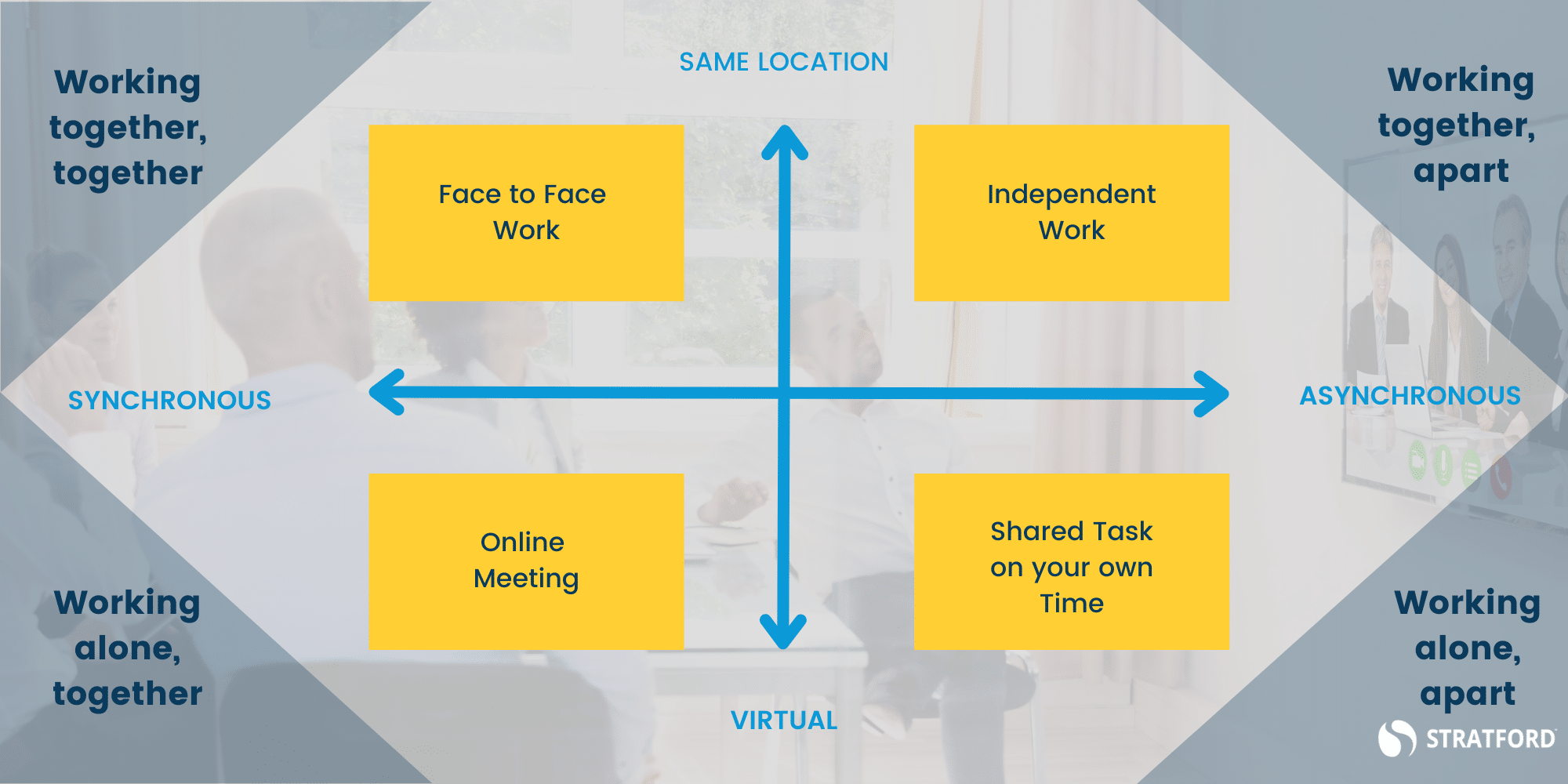In arguably one of the biggest collective pivots that we will see in our lifetime, the Covid-19 pandemic has profoundly changed the way we work. Many were forced to quickly set up home offices and shift to working from home while managers were faced with tackling the challenges that come with leading dispersed teams.
After months of navigating how to connect and thrive in a home-based office culture, leaders are faced with a new challenge – the hybrid team. With many businesses and workers now embracing a more flexible working arrangement, it’s time to examine how to make a hybrid environment work for you.
Shifting to Hybrid Teams
While it doesn’t seem possible, just look at your calendar and yes, we’ve been working in a different mode for two years.
Two years!
Driven by the global pandemic, we shifted to virtual on a dime. Leaders and teams figured out on the fly how to stay connected about work projects, have some social interaction, but most of all remain productive. In a lot of cases, we are more productive when working from home.
Well, that time is really starting to feel now like it’s really behind us. That said, with the relaxing of protocols and the re-opening of our workplaces, we leaders have been presented another fantastic challenge to work with: the hybrid team.
Redefining “the Office”
We’re becoming fairly well versed in what a hybrid team is… the mix of team members working in an office, from home, from client or community sites or other places that puts some geographic space between each of you.
In our perspective, this shift has given leaders the opportunity to examine all that you do in your teams. How you communicate, what does decision-making look like, how to move the perspective on performance from rear-ends in seats to outcomes, or how to make sure I’m not inserting new biases into my team processes are just a few of the challenges.
We like to test those team processes and norms against the model below. Built on the concept brought forward from HBR that employees are no longer place-constrained (from office to anywhere) or no longer time-constrained (synchronous versus asynchronous work), we now have the opportunity to also consider “what” we’re working on and the connection of that work to the rest of our team.
Is your hybrid team working together on projects – and is that work being done at the same time or not? Does it matter?
As we emerge from the pandemic, most of our organizations have firmly set their sights on flexible working arrangements thus creating perhaps all of these work modes in one team, at the same time!
Considering these varied work modes will help you have the right conversations in your team, enhance your focus on having a psychologically safe workplace, and ensure that those flexible practices that will provide your team members with continued work and life balance.
About Dean:
As part of Stratford’s People & Culture team, Dean brings more than 20 years of experience and a deep expertise in leadership development, organizational development and design, project management, process mapping, and best-practice benchmarking activities. With an extensive background in organization development and effectiveness, performance consulting and process improvement, Dean compliments his HR background with strong process management and competency-based project experience. Dean’s particular areas of expertise include:
- Leadership development strategy and program development
- Instructional design and facilitation; talent management program design and implementation
- Process design and project management
- Driving pragmatic, metrics-driven solutions

